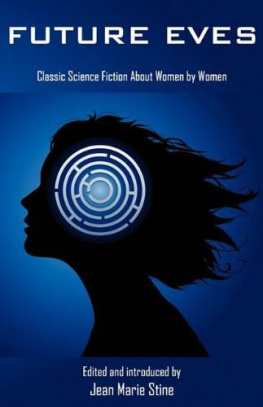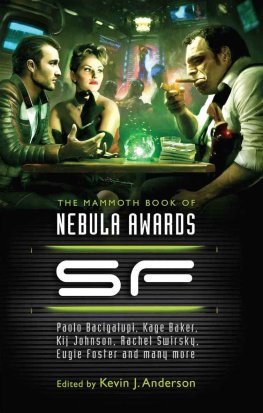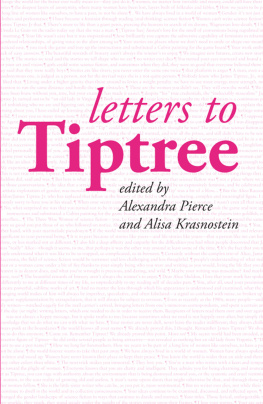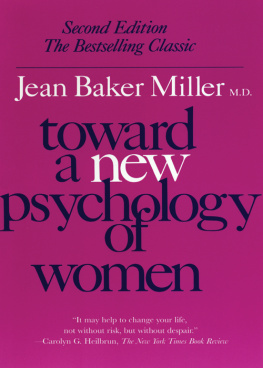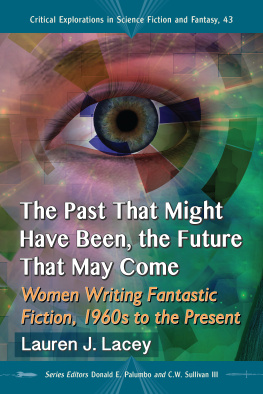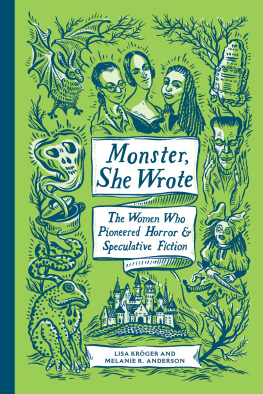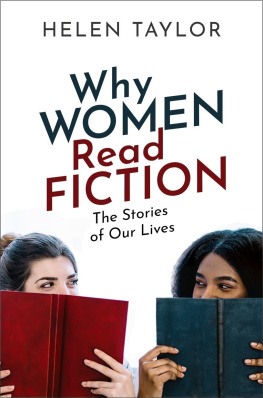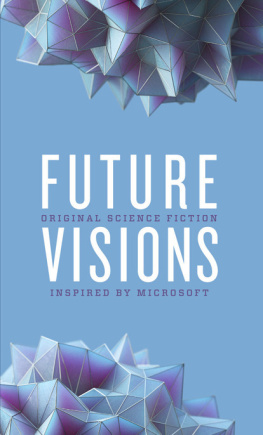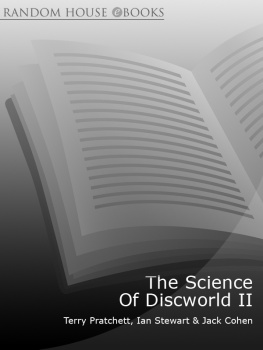FUTURE EVES
Great Science Fiction About Women by Women
Edited by
Jean Marie Stine
A Futures-Past Science Fiction Classic Selected and Introduced by Jean Marie Stine
A Renaissance E Books publication
ISBN 1-58873-070-0
All rights reserved
Special Contents Copyright 2002 by Jean Marie Stine
This book may not be reproduced in whole or in part without written permission.
For information contact:
Renaissance E Books
P. O. Box 494
Clemmons, NC 27012-0494
USA
Email comments@renebooks.com
CONTENTS
Introduction
PART I: FROM THE 1920s '30s
Conquest of Gola Leslie F. Stone
Delilah Margaretta W. Rea
The Man of Stone Hazel Heald
PART II: FROM THE 1940s '50s
Days of Darkness Evelyn Goldstein
Alien Invasion Marcia Kamien
Miss Millie's Rose Joy Leache
The Goddess of Planet Delight Betsy Curtis
Cocktails at Eight Beth Elliott
The Last Day Helen Clarkson
INTRODUCTION
"Eve."
It's a name freighted with negative associations: Temptation. Sin. Deception. The fall of man. For some three or four thousand years, this venerable lady's name has been blackened in every way imaginable.
But, when the story is examined, a diametrically opposite picture emerges. For, old Eve did pretty well by humankind. To her, if the tale be accurate, we owe: Knowledge. Science. Progress. Long life. Physical comforts. Perhaps even freedom from tyranny (if this be the step-child of knowledge and progress).
Clearly, Mother Eve must have been a remarkable and courageous woman.
Nor did the gifts end with Eve's generation. Today's Eves, equally remarkable and courageous women, have given us: Anti-fungal antibiotics. Egalitarian relationship models. Eyeglasses. Consciousness of social justice. And, of course, much, much more.
But what of Future Eveson Earth and among the Stars? What gifts will they bestow? Group consciousness? Immortality? Universal cheap power? A perfected economic and social system? Faster-than-light star drives?
There is no way to know, of course. But who is more qualified to give an educated guess than the women who write science fiction? It is into their stories we must peer if we wish a glimpse of the gifts future Eves may hold out to us. As futurists and feminists, they are in the best position to imagine the parts women may play and the contributions they may make in the world of tomorrow.
This anthology showcases nine classic tales by female science fiction writers, penned between 1926 (the publication of the first science fiction magazine) and 1960 (the dawn of modern SF), each featuring its own, unique future Eve. Although it is generally assumed that no or few women were writing science fiction during this period, research reveals a strikingly different picture. Recently a review was conducted of every issue of every SF magazine published from the debut first science fiction magazine in 1926 (Amazing Stories) and the modern age in SF magazine publishing in 1959 (when Imagination, the last pulp-influenced periodical went broke and the more literary, purse-sized magazines typical today became dominant). An unsuspected one hundred women contributed stories to their pages during those three and a half decades. Some researchers estimate the true number may well be twice that, as doubtless many women believing, perhaps rightly, that their work would find readier acceptance concealed their gender behind androgynous names, the anonymity of initials or beneath male pseudonyms.
Whatever names they may have chosen to write under, these pioneering women were so far ahead of most other women and men of their time that that they rightly deserve to be considered future Eves themselves. Take the cases of the nine writers represented here: Leslie F. Stone was so far ahead of her time that nothing like her novelette, "The Conquest of Gola" (1931), an encounter with Earth males told from the point-of-view of an alien matriarch, would be attempted again in science fiction until the work of Alice Sheldon (AKA James Tiptree, Jr.) in the 1970s. The scientific detective story is a subgenre of science fiction that flourished in the early 1900s with the adventures of Arthur B. Reeve's Craig Kennedy character; and Margarette Rea is one of the few women of the time to have, in "Delilah" (1933), written in the subgenre (in this instance utilizing the newly emergent science of "psychology"). Hazel Heald's novelette "The Man of Stone" is searingly feminist, all the more so since her heroine, like so many women of the time, takes her brutalized situation so much for granted; the title can be seen as having both a literal meaning and a metaphorical one in relation to the heart of the principle male character (Lovecraft fans are in for a real treat.) On a more modern note, Evelyn Goldsmith offers what is both a legitimate science fiction puzzle story and one of character in her "Days of Darkness" (1959) the tale of a spinster's encounter with an invisible, vampiric alien invader. Although "Alien Invasion" (1954) by Marcia Kamen is short, it is one many women will sympathize with after all, what else is sex between a man and a woman? In "Miss Millie's Rose" (1959), Joy Leche manages what so few male science fiction writers of the era seemed able to do: portray a character whose psychology arises out of her own future world and not our own. Betsy Curtis is a deceptively mild name for someone able to produce a work like "The Goddess of Planet Delight," a short novel in the classicAstounding mode that mixes a sociological puzzle with pointed satire, high-adventure and romance in its story of a traveling salesman who has to stop over one night at... "Cocktails at Eight" seems a deceptively mild domestic comedy, until you realize what author Beth Elliot is saying about the children her heroine has produced. Finally, the unknown Helen Clarkson offers "The Last Day," a haunting poignant short-short so prophetic that, though chosen prior to 9/11, hits home all the harder in the aftermath of that horrendous tragedy. You will find an Eve of the future at the heart of each of these classic science fiction stories about women by women.
Jean Marie Stine
1/9/2002
Watch for the next Futures-Past/PageTurner E-Books release,and be sure to visitFuture Sagas, our free on-line magazine of classic science fiction to see the original magazine illustrations for some of these stories, as well as forgotten fiction, rare covers, articles and illustrations, plus news of our forthcoming e-books. URL: http://www.hometown.aol.com/pulplady/FUTURES.html/
PART I:
FROM THE 1920s '30s
THE CONQUEST OF GOLA
Leslie F. Stone
(Wonder Stories, April 1931)
I.
HOLA, my daughters (sighed the Matriarch), it is true indeed,
I am the only living one upon Gola who remembers the invasion from Detaxal. I alone of all my generation survive to recall vividly the sights and scenes of that past era. And well it is that you come to me to hear by free communication of mind to mind, face to face with each other.
Ah, well I remember the surprise of that hour when through the mists that enshroud our lovely world, there swam the first of the great smooth cylinders of the Detaxalans, fifty tas in length, as glistening and silvery as the soil of our land, propelled by the man-things that on Detaxal are supreme even as we women are supreme on Gola.
In those bygone days, as now, Gola was enwrapped by her cloud mists that keep from us the terrific glare of the great star that glows like a malignant spirit out there in the darkness of the void. Only occasionally when a particularly great storm parts the mist of heaven do we see the wonders of the vast universe, but that does not prevent us, with our marvelous telescopes handed down to us from thousands of generations before us, from learning what lies across the dark seas of the outside.
Next page
